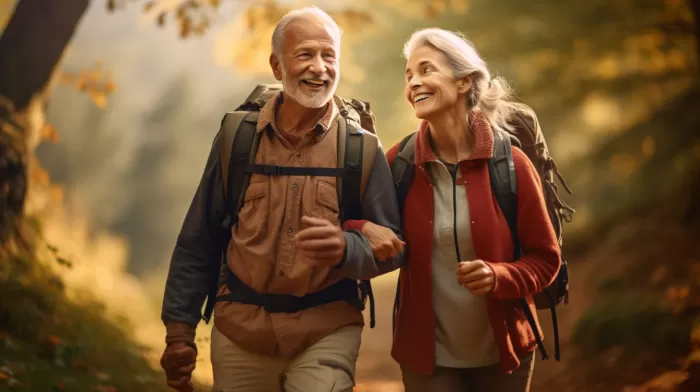I will never forget climbing the trail to a quiet glacier near Banff, Canada with my wife and encountering a couple at least 15 years our senior. We were hiking up a steep incline, and they were coming back down. They paused briefly to smile and encourage us. After pleasantries, the man simply commented, “motion is life.” I was suddenly aware that if this was hard on me, all the better. I may have been pushing my muscles to the limit that day, but the alternative was not being able to move. That day I realized a great blessing — to be able to move… to climb that mountain and see that glacier.
Everything alive moves… and is grateful to be able to move. But if you don’t “move it,” as the saying goes… you lose it. There are few reasons not to move. For starters the human body was built to move. But if “exercise” feels like it’s a four -letter word to you, put it out of your mind… and just move.
A body in motion stays in motion
It’s really appropriate that Sir Isaac Newton’s first law of motion has become a common reference in the realm of physical fitness. Think about it: The first law states that a body at rest will stay at rest until a net external force acts upon it and that a body in motion will remain in motion at a constant velocity until acted on by a net external force.
That’s a mouthful. The first part of that makes me think of a couch potato — and gravity pressing down on that person… holding them down as their muscles and body slowly deteriorates… and their risk of death from sitting increases.
You don’t want to be that person. You want to be the person gaining momentum — boosting your health and energy and going places (even if it’s just around the block). And not only that, you want to do it well into your senior years. Mobility promotes healthy aging. For most people it decreases with age. It makes sense that some things just become harder to do. But if you just stop, everything stops.
Getting in motion
Motion deserves to be fun so that you’ll naturally want to do it again and again. It has no boundaries. And there are no “have- tos” in a motion plan that is optimal for you; there is just what works (functional) and what doesn’t (dysfunctional).
Walking is a great place to start. It integrates and provides a workout for your entire body — including musculoskeletal, cardio-respiratory and sensory and neural systems. And the benefits! This simple activity can exert a tremendous influence over your health, lowering your risk of Alzheimer’s, protecting your heart, defending against cancer, decreasing your risk of disability, controlling your weight and increasing your life expectancy.
I recommend “moving” by walking a few days a week for a minimum of 20 minutes each time. Soon you’ll be up to walking every day for as much as a half hour daily or more. How do I know this? Because the more you “move” the more energy you will end up having… and you’ll naturally want to “move” some more — just like Newton’s law says.
Speed is not important. In fact, research is finding that slow movement — think hatha yoga and tai chi — is helping people reduce functional disability, pain and depression. In one study people with chronic back pain took 12 weeks of tai chi classes and not only experienced less pain and stress but also gained more confidence in moving.
The most important thing is finding a manner of moving that you enjoy — so you’ll stick with it. Here are a few pointers to help you make the most of moving:
- Make it fun. When you walk, choose a few different routes around your home, the park, the mall (winter time), nearby high-school track. Invite a friend and increase your health benefits! Using a treadmill? Face the window or listen — and sing out loud — to your favorite music.
- Record the time spent in walking/moving each day on a calendar if you’re setting personal goals. Goals are much easier reached if written down. And you’ll be able to look back and see how far you’ve come. Or just go with the flow…
- Diversity is key. Consider mixing it up a little. Just like your mind, your body gets bored too. Try yoga, tai chi, or dance to improve flexibility; working out with weights or resistance bands for strength if you feel up to it; or cardio fitness, like aerobics or burpees to boost your heart health.



